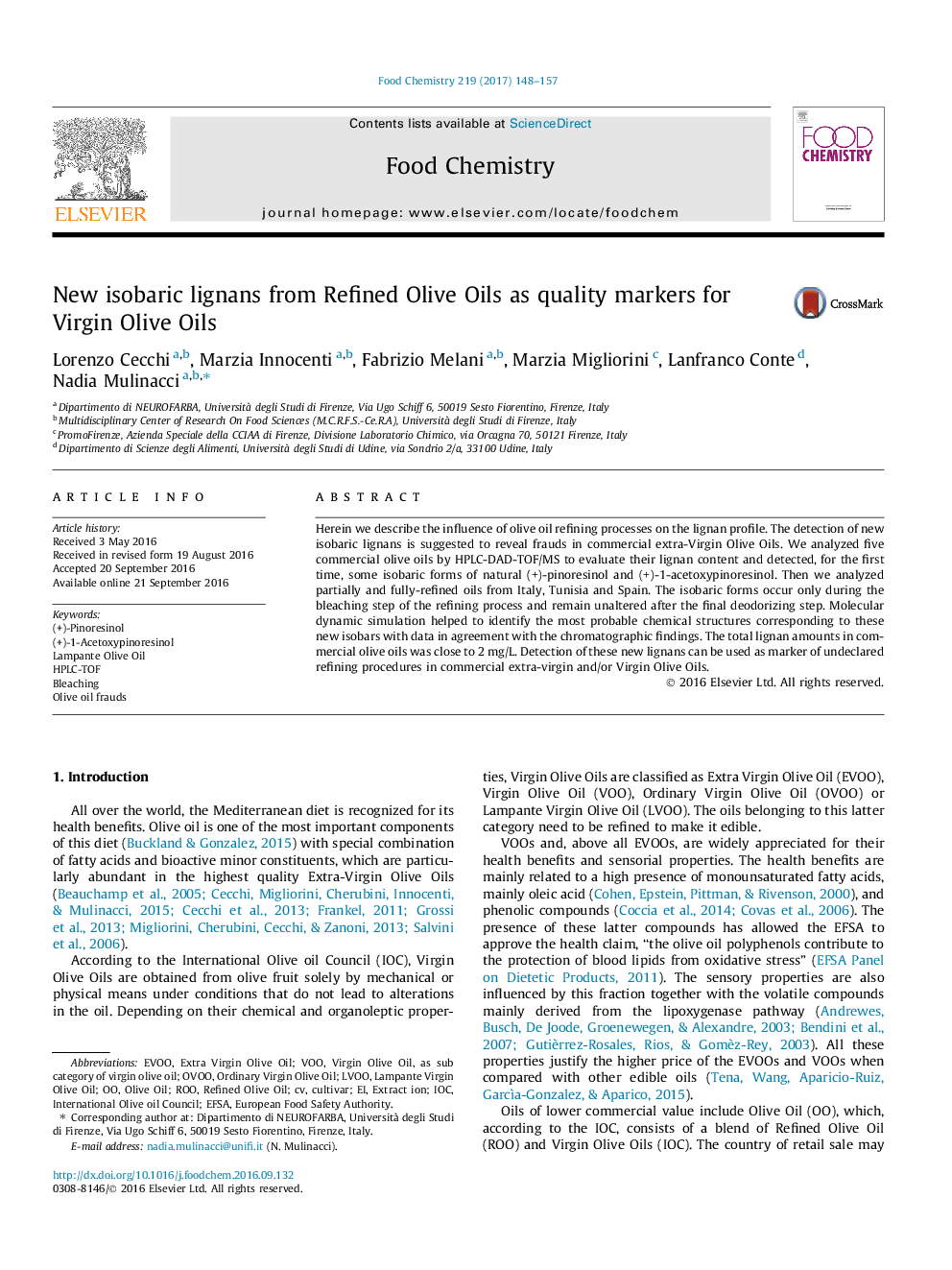| Article ID | Journal | Published Year | Pages | File Type |
|---|---|---|---|---|
| 5134135 | Food Chemistry | 2017 | 10 Pages |
â¢Bleaching step of the refining process induces lignan isomerization.â¢New lignans detected by HPLC/DAD and confirmed by MS-TOF.â¢Data from molecular modeling agree with the chromatographic results.â¢The new isobaric lignans as markers of not declared refining procedures of virgin oils.
Herein we describe the influence of olive oil refining processes on the lignan profile. The detection of new isobaric lignans is suggested to reveal frauds in commercial extra-Virgin Olive Oils. We analyzed five commercial olive oils by HPLC-DAD-TOF/MS to evaluate their lignan content and detected, for the first time, some isobaric forms of natural (+)-pinoresinol and (+)-1-acetoxypinoresinol. Then we analyzed partially and fully-refined oils from Italy, Tunisia and Spain. The isobaric forms occur only during the bleaching step of the refining process and remain unaltered after the final deodorizing step. Molecular dynamic simulation helped to identify the most probable chemical structures corresponding to these new isobars with data in agreement with the chromatographic findings. The total lignan amounts in commercial olive oils was close to 2Â mg/L. Detection of these new lignans can be used as marker of undeclared refining procedures in commercial extra-virgin and/or Virgin Olive Oils.
